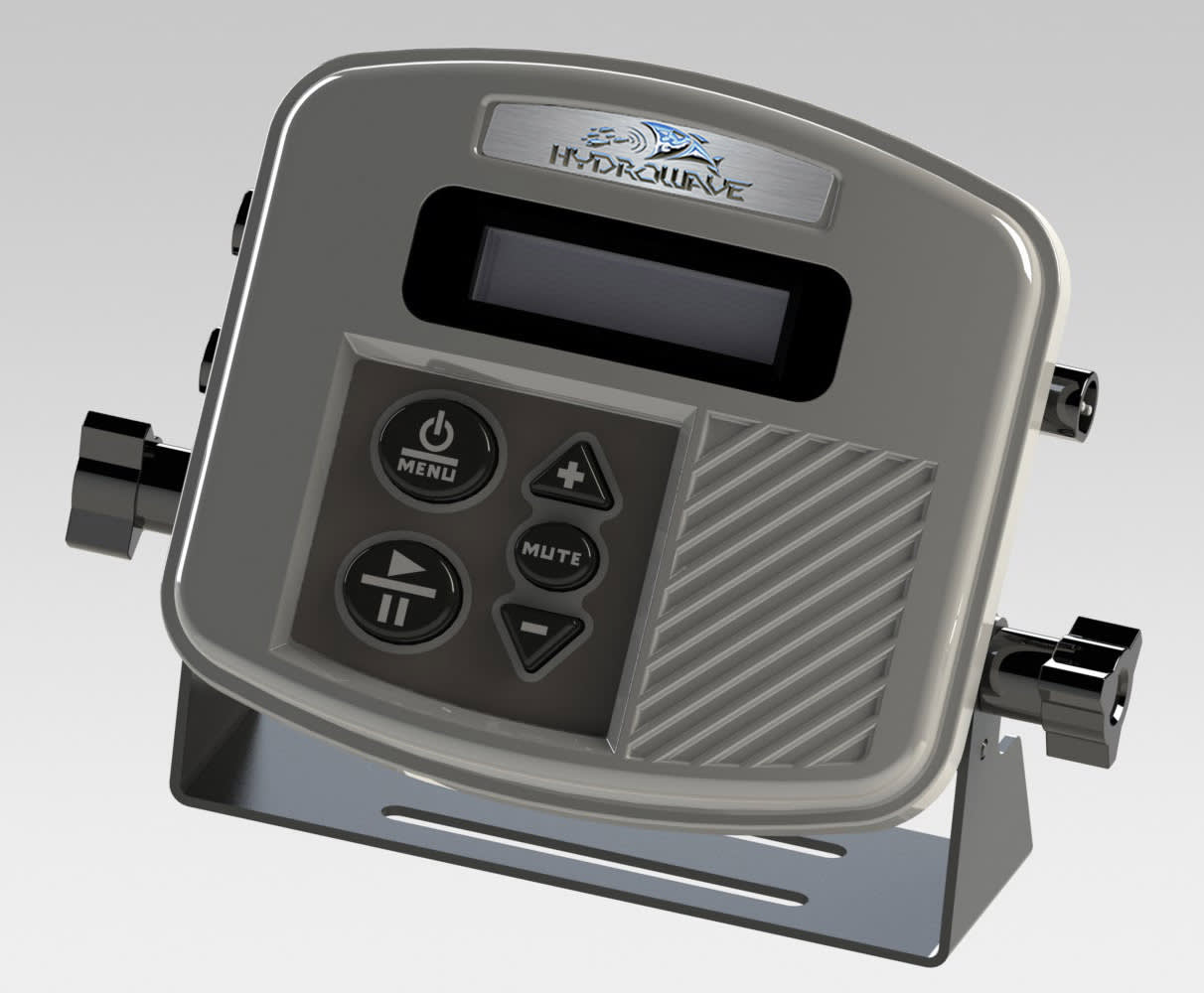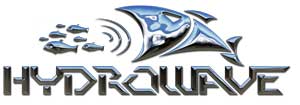Inshore Saltwater HydroWave Makes Noise at ICAST
OutdoorHub 07.13.11

 DALLAS (July 7, 2011) – Coastal anglers know better than most the benefit of exciting schools of redfish, speckled trout, snook and other species into a feeding frenzy. Up until now, they’ve generally had to rely on chum or lights at night to attract these fish in numbers in order to take advantage of their instinctive competitive eating habits. HydroWave has a better way.
DALLAS (July 7, 2011) – Coastal anglers know better than most the benefit of exciting schools of redfish, speckled trout, snook and other species into a feeding frenzy. Up until now, they’ve generally had to rely on chum or lights at night to attract these fish in numbers in order to take advantage of their instinctive competitive eating habits. HydroWave has a better way.
The brand new inshore saltwater HydroWave™ unit incorporates the latest in patented electronic technology that effectively imitates the underwater sounds of forage and fish-feeding activities, of which research has proven to stimulate feeding impulses in game fish. The unit emits sound waves that predatory fish feel, hear and sense as natural baitfish activities, to “ignite a feeding frenzy.”
Earlier this year HydroWave introduced a freshwater unit (see in New Product Showcase), mostly with bass fishermen in mind. It was an instant success, so the company has proven its technology, expertise and capabilities to bring an electronic device of this magnitude to market. But HydroWave officials are saying their product development team is probably even more excited about this product launch than they were the original unit because of saltwater’s naturally “noisy” environment and the highly predatory nature of so many kinds of roaming game fish species in it.
Martin Pollizotto stated in his “Saltwater Fishing Made Easy” book that, “Fish hear through their internal ‘ears’ and with the aid of their lateral line.” Others have witnessed how predator fish are especially attuned to the sounds of wounded and struggling baitfish and often respond before ever seeing their quarry. HydroWave allows anglers to take advantage of this behavior in an easy-to-install and use electronic unit.
HydroWave engineers say having a unit that emits underwater sounds is no big deal anymore since they have that mastered. What they’re really excited about is having recorded and been able to exactly reproduce several primary saltwater sounds. As a result, the new inshore HydroWave comes with six proprietary sounds including croaker frenzy and croaker finesse, mullet frenzy and mullet finesse, shrimp frenzy and shrimp finesse. The frenzy versus finesse settings are all about the conditions in the environment at the time and the moods of the fish.
“These sounds are truly natural and were collected using a highly tuned hydrophone off the South Texas coast,” said HydroWave president Gene Eisenmann. “This allows the HydroWave to effectively mimic the feeding of inshore saltwater fish and prey. The finesse sounds are used to mimic bait activity in a passive environment where feeding activity is minimal and requires a more subtle stimulation.”
Eisenmann further explained that the HydroWave’s finely tuned amplifiers deliver tactile sounds, which differ from ordinary sounds because they are the sounds and vibrations that can actually be “felt.” A good example is when a person can “feel” a sub-woofer resonating throughout his or her body due to the pressure waves. He said the same is true for fish.
HydroWave’s Tactile Sound Transmissions incorporate both Lateral Reactive Technology and Vibration Reactive Technology. The combination of sound, vibration and pressure are all required to stimulate a feeding response in predatory fish species.
The HydroWave speaker is a true omnidirectional speaker, which means it outputs sound in all directions in an even pattern and wavelength. HydroWave also features a patented Frequency Amplification System that is specifically targeted to the volumes and frequencies of the proprietary Tactile Sound Transmissions that make this unit so unique.
HydroWave construction boasts of a durable injection-molded housing that is 100-percent waterproof. Extensive testing was conducted to ensure the housing and electrical components would withstand the constant pounding of rough boating conditions and the corrosive nature of saltwater. The 3.5″ x 2″ x 2″ speaker is equally durable and mounts to the underside of a trolling motor’s lower unit, or can be suspended in the water from a pier.
HydroWave installation was designed with simplicity in mind. The unit is relatively small in size, measuring only 4″ x 4.5″ x 1.5″, and can be mounted using the provided bracket or Velcro. The only wires involved are the power cord and speaker wires. Power comes from a 12-volt source on the boat and then simply plugs into the HydroWave unit. For fishing from a pier, it can also be powered using a typical flashlight-lantern battery.
The inshore saltwater HydroWave was made for bay, backwater, inlet, marsh and pier fishing, but can also be effectively used offshore. It is designed especially to attract redfish, trout, flounder, snook, striped bass, cobia, grouper, mackerel and snapper.
The saltwater HydroWave is expected to be available by early August, retailing for around $499.99.
For more information, visit www.HydroWave.com.
Contact:
Gene Eisenmann, (214) 202-1426

